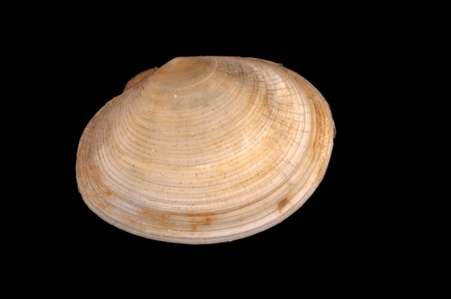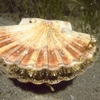General Description
The shells of this species are thin, fragile, shiny, white, ovate, compressed. Exterior sculpture of weak concentric lines (striae) covered with thin yellowish brown external coating (periostracum). Shell up to 4 cm across.
Biology
This species is among several small white Victorian bivalves which lack any easily-identified distinguishing characters.
Habitat
In sand and mud, often near the entrances to estuaries, to depth of 15 m.
Soft substrates
Distribution guide
Southern Australia.
Species Group
Sea snails and shells › Bivalves
Depth
Water Column
Max Size
4 cm
Diet
Organic matter
Commercial Species
No
Conservation Status
- DSE Advisory List : Not listed
- EPBC Act 1999 : Not listed
- IUCN Red List : Not listed






